|
Atterbury-Bakalar Air Museum
Ernie Pyle WWII Museum
Five Points Fire Museum
Fort Wayne
Firefighters Museum Freeman
Army Airfield Museum
Virgil "Gus"
Grissom Memorial
Hoosier Air Museum
Indiana Military
Museum
Indianapolis Fire Museum McClain
Military Museum
Military Honor
Park and Museum
Museum of the Soldier
National
Military History Center/Automotive and Carriage Museum National
Model Aviation Museum
Rolls-Royce Heritage Center, Allison Branch
Ropkey Armor Museum
Stutz Car Museum
Wayne County
Historical Museum
Indiana Museums -
Aviation, Military, Automotive and Fire
National Model Aviation Museum
Muncie, IN
Last Date Visited: 1-28-2015
The Academy of Model
Aeronautics (AMA) was formed in 1936 and moved to Muncie, IN from the
east coast in 2001. The reason for the move was more land was
available to fly model aircraft on the former farm land on the east side
of Muncie than was available as the east coast became more crowded with
housing developments. Along with the AMA came the National Model
Aviation Museum, which is located in its own facility on the premises.
This was the second time I
have visited the museum, having stopped by not too long after it opened.
On this trip I had limited time, and with all the displays, I will need
to return to be able to take in more of the information that is
available in the museum. There is much to learn and see inside the
museum.
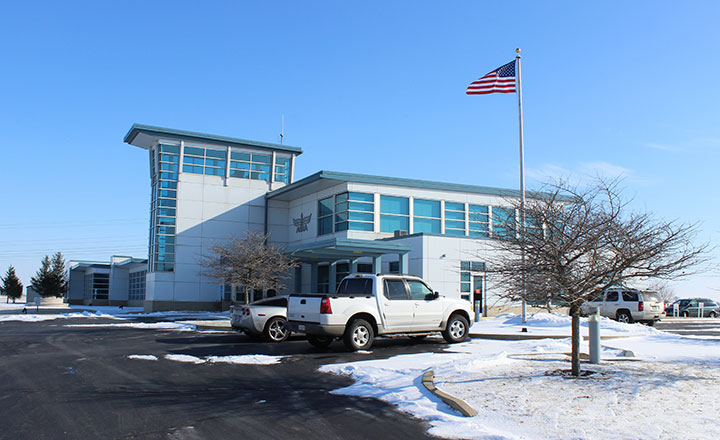
This building is the headquarters for the Academy of Model Aeronautics
and was dedicated in June of 2001.
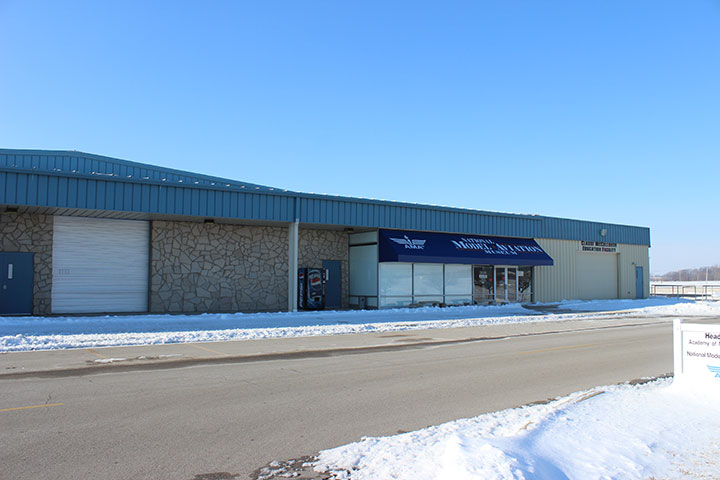
To the west across the main drive on the grounds is the home of the
National Model Aviation Museum.
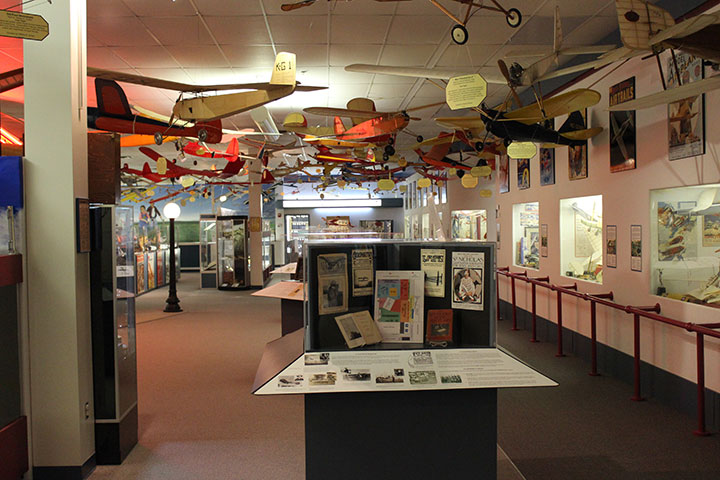
Once past the lobby one turns into the museum proper and finds the
display area filled with flying models of all sorts hanging from the
ceiling. Along the wall to the right are various displays
explaining the history of flying model aircraft along with stand alone
displays out in the open area. There is a wealth of information on
the hobby and the aircraft in this area.
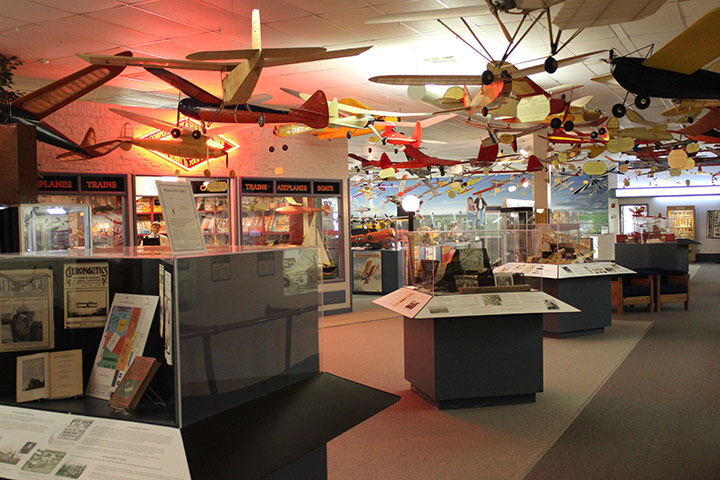
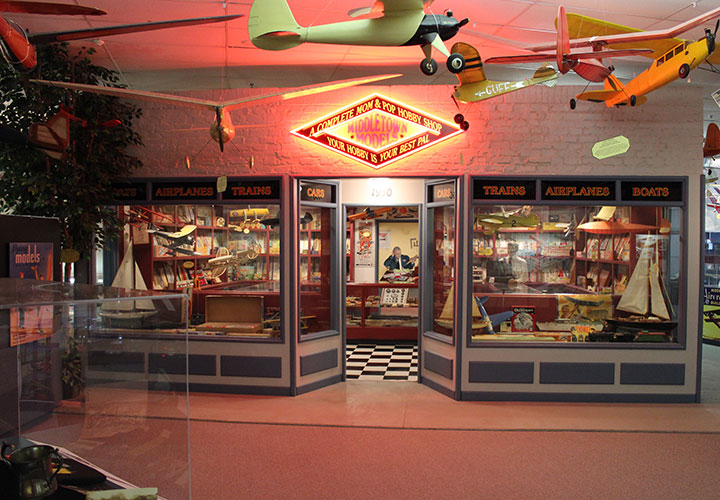
In my opinion the most unique display in the facility is this recreation
of a 1950 hobby store that dominates this section of the musuem.
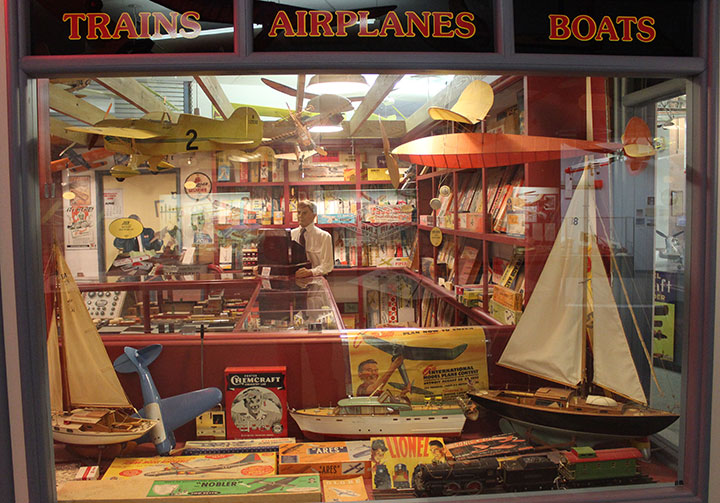
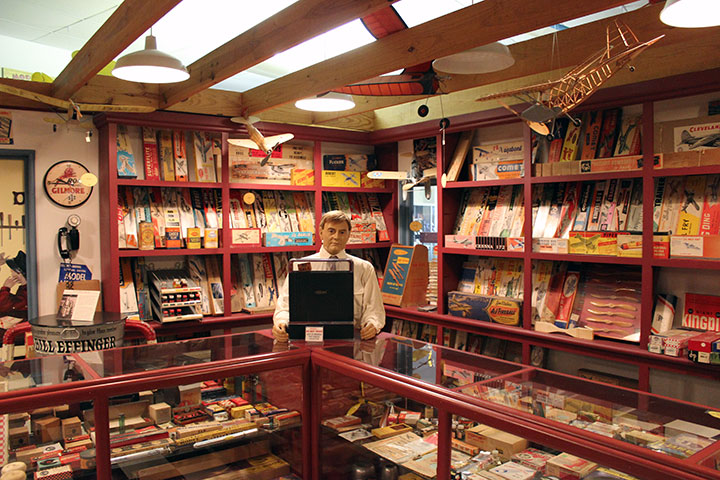
Inside the store the owner stands behind the cash register waiting to
provide assistance and ring up a sale.
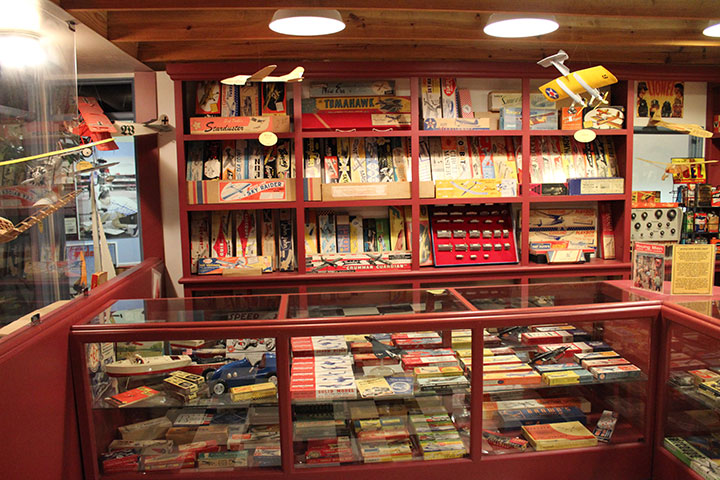
The models, whether flyable or not, are all wood. In the display
cases and on the walls are models of aircraft from World War Two and
those of the early jet age. This is a true step back in time.
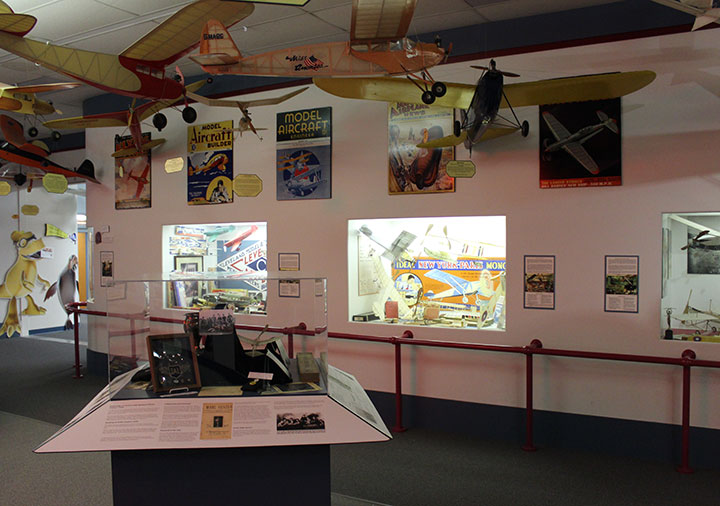
Leaving the store this photo shows how different displays are built into
the walls with other information located in the "islands" in the middle
of the floor.
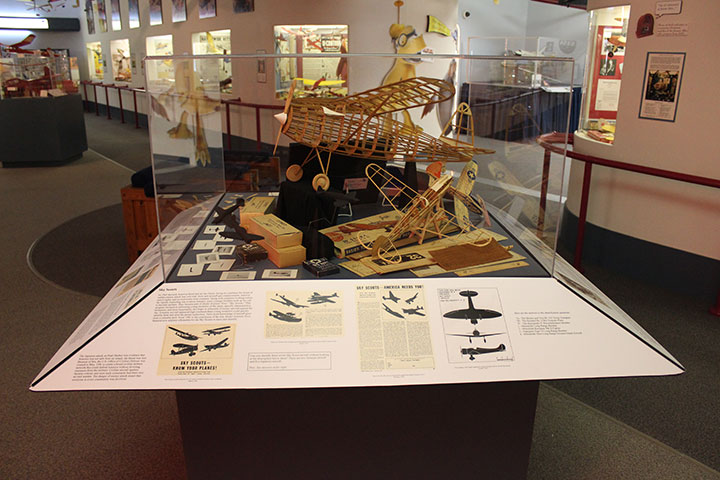
This island's subject was the story of models used for recognition
aircraft for pilots and aircrews in World War Two.
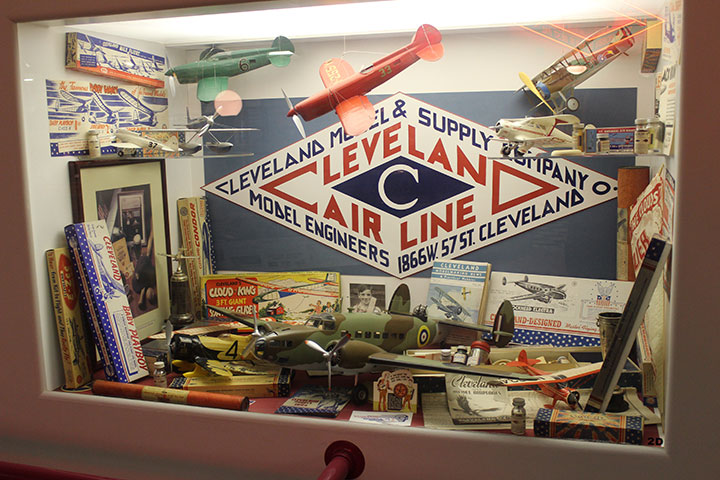
The Lockheed Hudson located in the center of this display on the
Cleveland Air Line Company was most impressive.
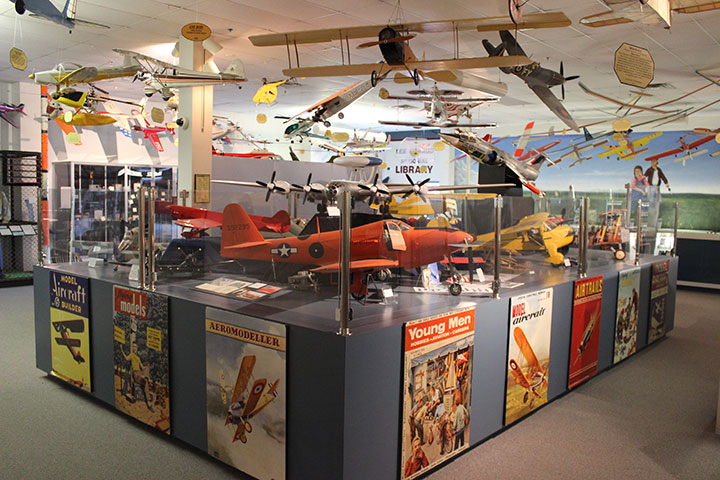
An area is dedicated to more models back farther in the museum.
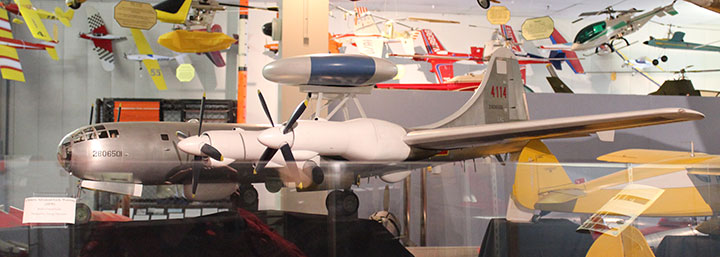
What really drew me to the display was this turbo prop AWACs version of
the B-29. I was confused because I did not know what it was and
the identification on it only said "Chinese Advanced Early Warning", and
that the model was "radio scale". Later research indicated this is
a model of a Chinese KJ-1, which used the TU-4 Russian reverse
engineered version of the B-29 as the airframe. This was the first
of its type for the Chinese and one can still be seen on display at the
China Aviation Museum on the internet. This unusual model lead to
me adding to my aviation history knowledge on an aircraft I did not
previously know existed.
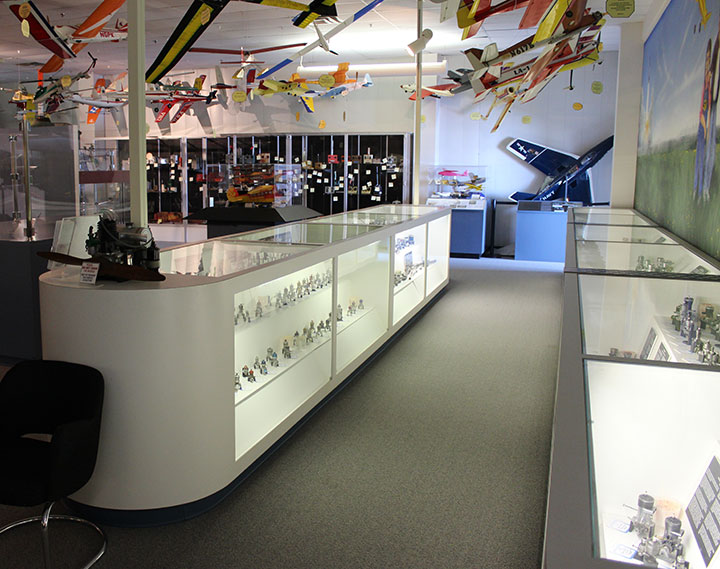
Along the back wall of the museum are two display cases that show
various model engines from different manufacturers.
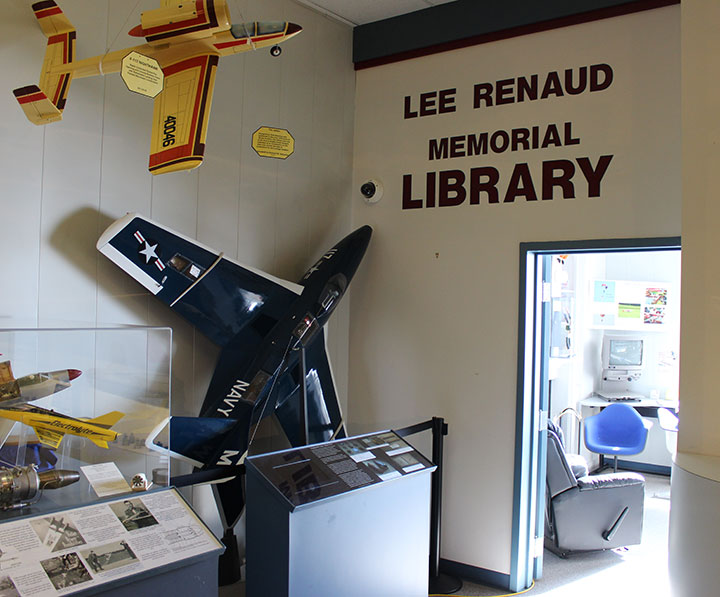
Some of the models are small and some are big, as can be seen from this
Grumman F9F Cougar and its size in relation to the doorway next to it.
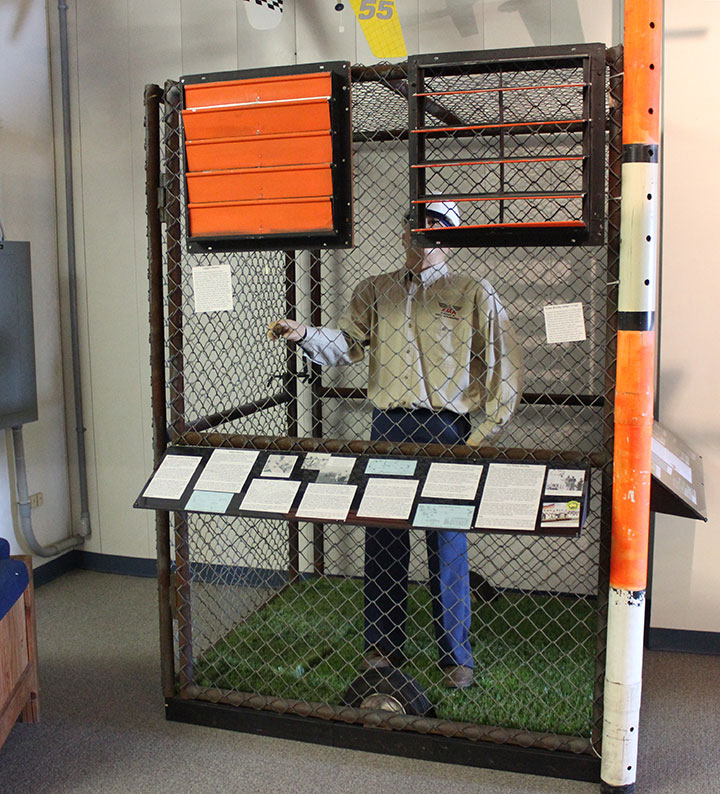
What is this? First, one must think radio controlled pylon racing,
just like the Reno Air Races, except for model flyers, and the need for
judges to be able to make sure the participating aircraft don't "cut"
the pylons. Then one needs to remember the pilot is not in the
aircraft itself, but some distance away and due to that distance, could
lose visual perspective in relationship to the pylon judge, or could
just fly the racer too low when turning the pylon. Even though the
pilots had spotters located outside the track with radio communication
to tell the pilot where the aircraft was in relationship to the pylons
and the judges, the pilot could still not lose track of where the
aircraft really was. So this cage was an attempt to protect the
pylon judges from getting hurt while out on the race track when things
went wrong. Note the shutters that can be closed to protect the
judge's face in case of an impact. According to the information at
the display, technology has rendered these cages obsolete, and now
allows the judges to be off the course but still monitor the pylons.
This no doubt pleases the judges to no end.
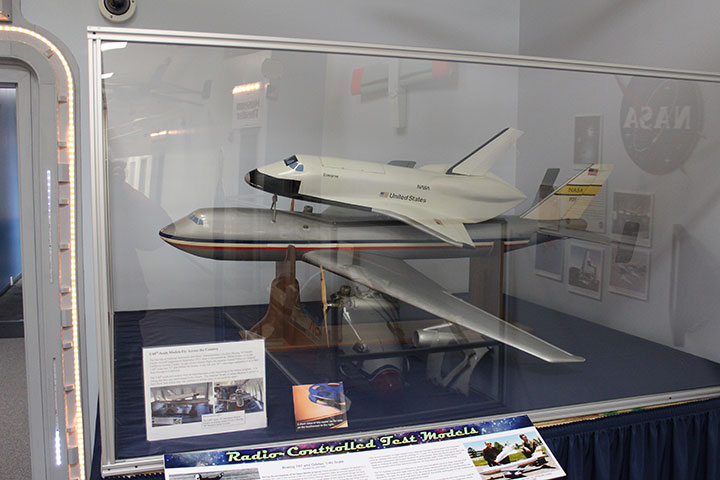
There are many models and displays in the museum which are not included
in this report and are best viewed and enjoyed in person. However,
I have included this as my last topic this 1/40 scale radio controlled
model on display of an Orbiter mounted on a Boeing 747. This is an
actual model used by engineers at the beginning of the Orbiter program
to test the concept of flying the Orbiter back to the launch site in
Florida after landing in California.
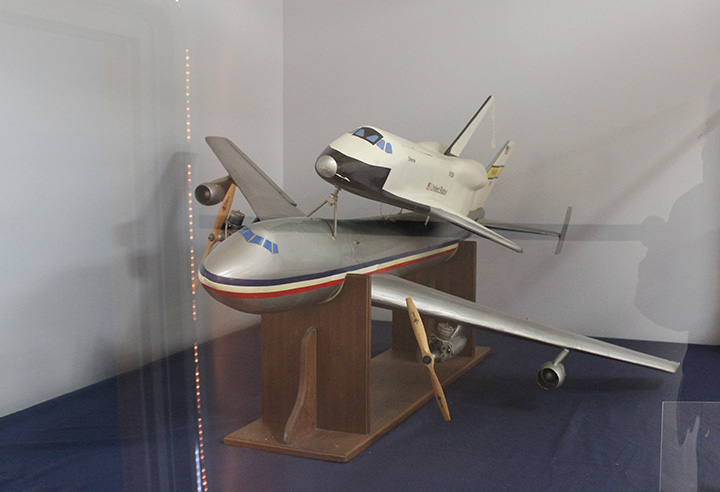
Note the two engines and propellers on the model.
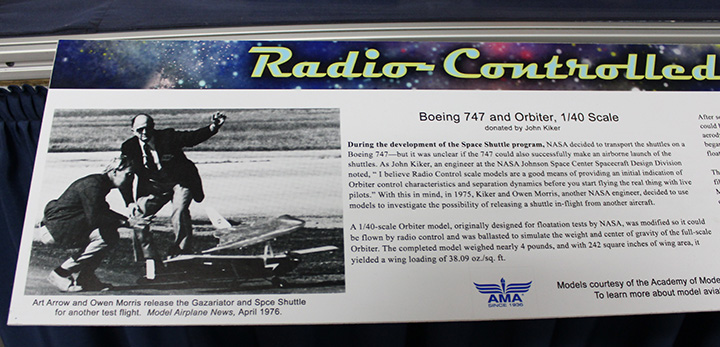
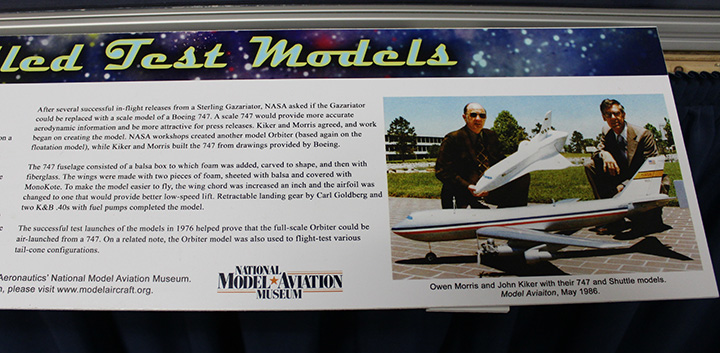
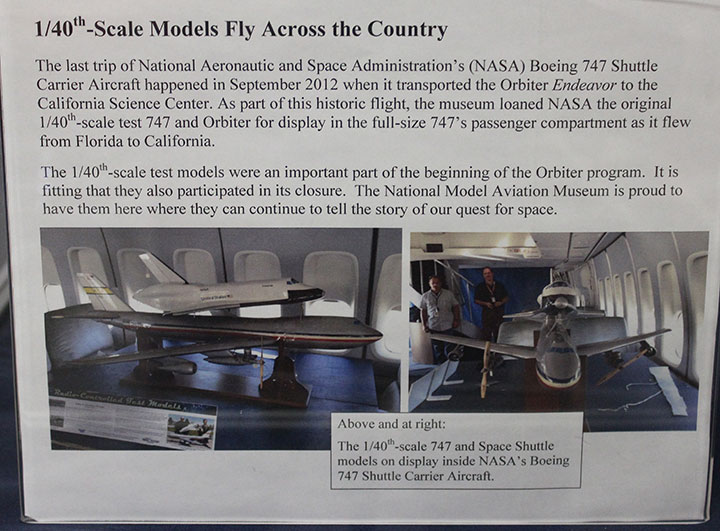
When the Orbiter Endeavor flew from Florida to California on its last
flight, this model was on board the 747 as a "special guest" during this
historic trip.
There are many displays, model aircraft and
related information that can be learned by a visit to the National
Aviation Model Museum in Muncie. One does not have to be a modeler
or aviation enthusiast to enjoy the great displays in the museum, but
just be ready to learn about an exciting hobby that has been taken up by
many over the years.
During the summer the Academy holds many
model flying events on the open field behind its headquarters which are
open to the public to visit and watch.
|




















